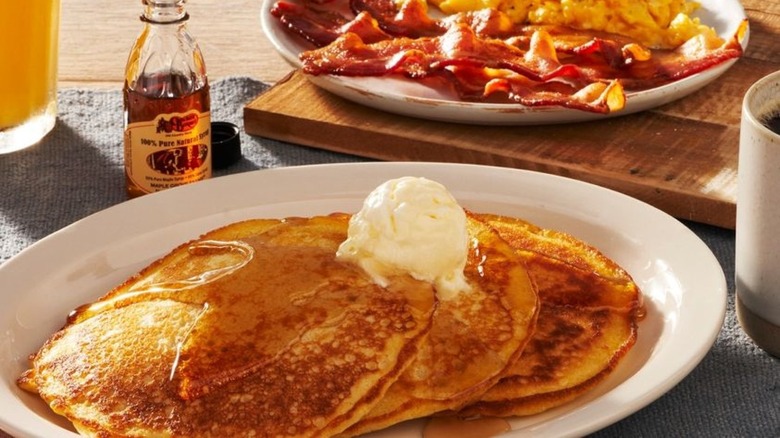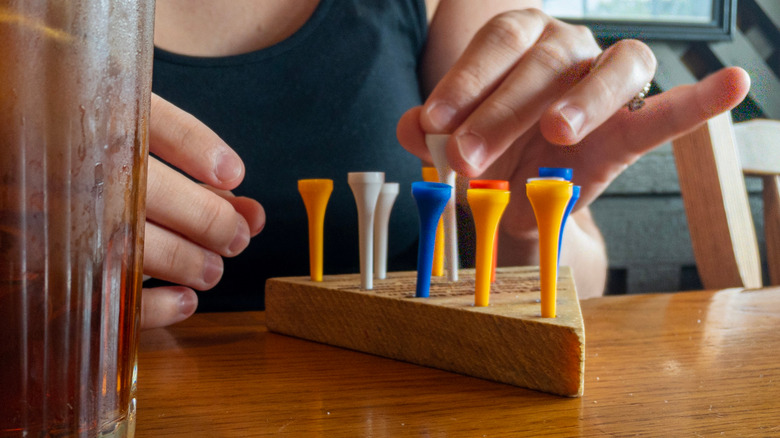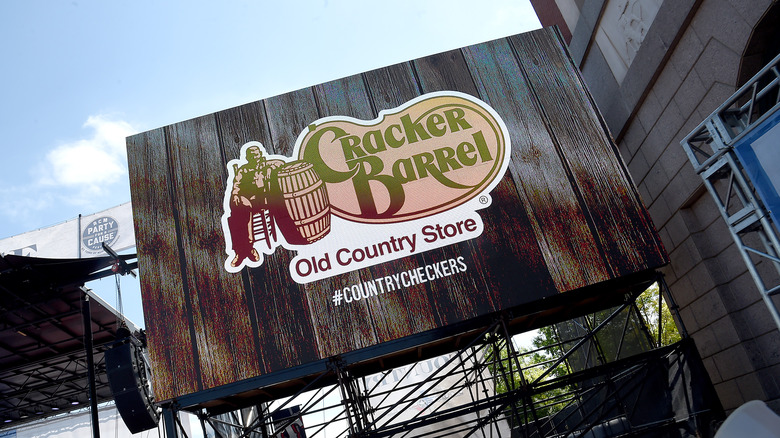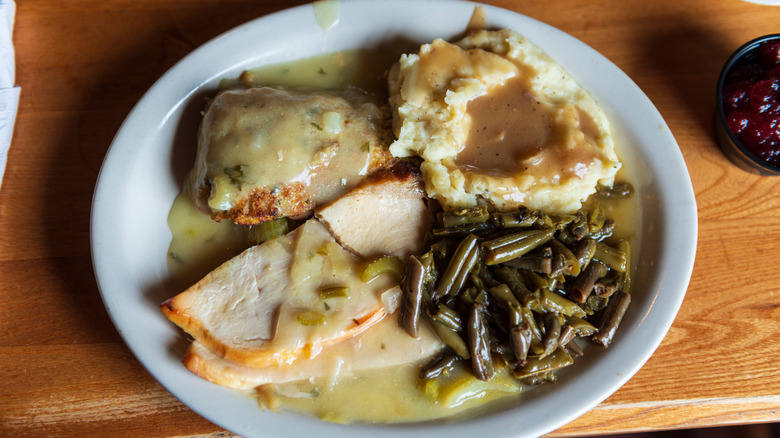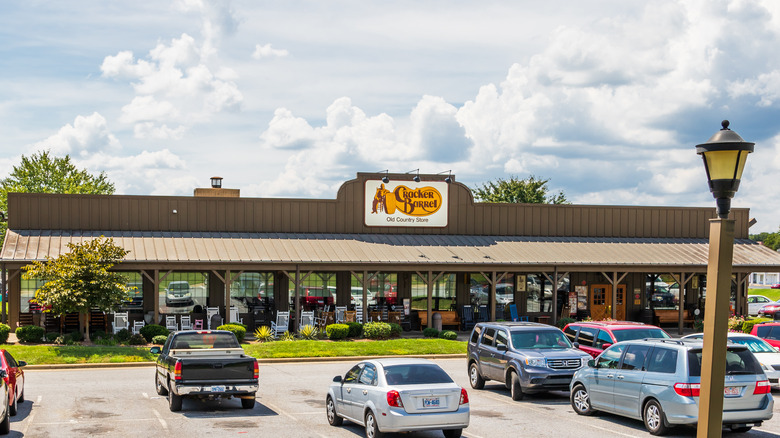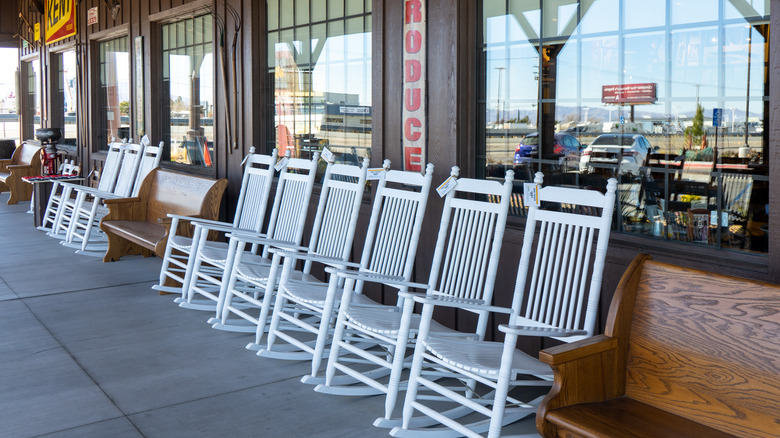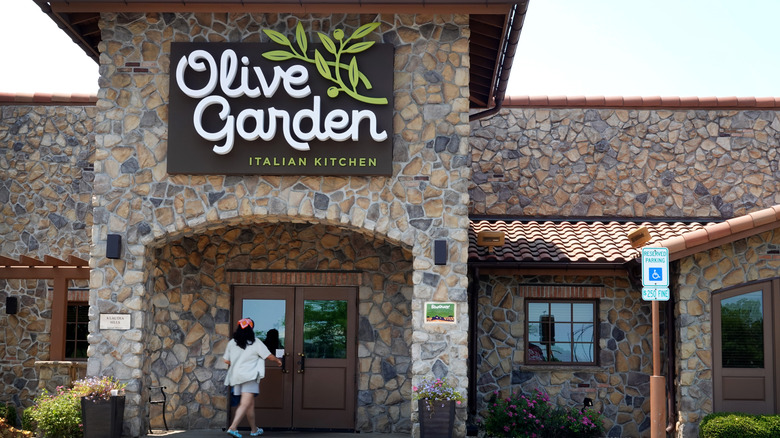6 Reasons Cracker Barrel Is Struggling
Since the pandemic, consumers and businesses have struggled to stay afloat. This is due to a wide combination of reasons, including rampant inflation and high operational costs. Not even large chains are immune to these struggles. For example, the popular and long-successful restaurant chain Cracker Barrel Country Store, has had an especially tough run over the last several years. At one point, there was even a rumor that the store was closing permanently.
Cracker Barrel has made some drastic changes to combat its business issues. In 2023, Julie Masino replaced the former Cracker Barrel CEO, Sandra Cochran. In addition, the restaurant chain has launched a new loyalty program based on the popular "peg game" that it is so well known for. In the program, customers can earn "pegs" when they spend money at both the Cracker Barrel restaurant and retail store. In a shareholder conference call in February 2024 (via Investing.com), Masino said, "Obviously, there is a lot of work to do and it will not be quick or easy, but I am excited and optimistic about the path we are on."
Meanwhile, it remains true that Cracker Barrel has a lot of heavy lifting left to do, particularly because there are so many reasons that the chain is not doing so well. As the chain continues to fight an uphill battle to revitalize its brand and stay relevant in today's market, we have examined all the reasons that Cracker Barrel is struggling.
1. Higher prices and fewer diners
It's not news that inflation is at an all-time high. Since the pandemic, consumers are tightening their budgets to survive. At the same time, restaurants need to raise their prices to keep up with inflation. All in all, it is not a pretty picture, and even longstanding restaurants like Cracker Barrel are not immune to the state of the economy. The restaurant — which as of the 2024 financial quarter, had to raise its prices by 4.2%, according to the Cracker Barrel website – has struggled to keep up the levels of traffic that it needs to succeed.
The price of restaurant food has risen by 3.6% in the last year as of November 2024, according to the National Restaurant Association. This increase is reflected in the decrease in Americans dining out. According to an August report from the Ispos Consumer Tracker, a third of American consumers say they've cut back on dining out, preferring instead to stay home and cook to save money.
While Cracker Barrel did see a boost in its 2024 Q4 earnings compared to 2023 Q4 earnings ($836.7 million versus $894.4 million reported total revenue, a 6.9% increase), it still fell short of the analysts' consensus mark of $899 million and saw a store sales decrease of 5.5% from 2023.
If it is any solace for Cracker Barrel, they aren't the only chain struggling. IHOP, the Cheesecake Factory, and Applebee's all saw downturns in their business over the last year.
2. A lack of proper marketing
Even for a well-established chain like Cracker Barrel, which has been in business since 1969, word of mouth doesn't seem to be quite enough to propel business forward in 2024. In 2023, newly-appointed CEO Julie Masino identified cuts to Cracker Barrel's advertising budget as one of the reasons why the business had been struggling. Failure to freshen up an outdated brand image has been detrimental to more than a few American heritage chains, including the downfall of Friendly's, a 1930s-founded restaurant that operates in the same casual family sector as Cracker Barrel.
Within months of assuming her position as CEO she brought in a new Chief Marketing Officer (CMO), Sarah Moore, to breathe new life into Cracker Barrel's marketing efforts. In Cracker Barrel's Fiscal 2024 Fourth Quarter Conference Call, Masino appeared optimistic about how these marketing strategy changes would unfold. "We've partnered with a top tier agency and have conducted extensive qualitative and quantitative research that is informing our upcoming brand refinements," she said.
During the call, Masino also noted new CMO Moore as being a digital marketing expert. When Cracker Barrel made the mistake of shifting funds away from advertising, this almost certainly took much-needed attention away from online ads and promotions. In today's world, Cracker Barrel cannot afford to neglect its digital brand image. According to recent data published by WebstaurantStore, of the 90% of consumers that research a restaurant online before dining there, 72% of them gather their information from social media.
3. Its guest experience isn't good enough
One of the most prominent ways the older restaurant shows its age is by losing sight of the guest experience. A clutter of faded decor that hasn't been changed since who knows when, sticky or dirty floors, and beat up dining room furniture are some of the first things guests notice when they walk into restaurants that are past their prime. Once they sit down, the service is disappointing. Cracker Barrel has been struggling with these issues for a while.
Cracker Barrel's need to modernize its dining environment also extends to the food being put on guests' plates. The chain built its reputation on serving homestyle meals at affordable prices, but customers agree that the quality standards have slipped. Complaints about Cracker Barrel's food have routinely been shared online. Common grievances include the food being overly greasy, too salty, sloppily prepared, and improperly cooked. "Service sucks. Food sucks. Vibes suck," was one Yelp reviewer's bold statement regarding a 2024 visit to Cracker Barrel.
Upper management at Cracker Barrel admits improvements to the guest experience need to happen now. Cracker Barrel has embarked on a remodel program that will implement updates to the interiors or exteriors of select locations. The remodel program, which will continue into 2025 will be accompanied by menu changes. The biggest question remaining is: will this be good enough?
4. A lack of young fans
Restaurants that get labeled as a place where only elderly people eat can have a hard time shaking that reputation. In 2023, the Wall Street Journal revealed that 43% of Cracker Barrel customers are over the age of 55, while a mere 23% are under the age of 34. Despite CEO Julie Masino's many hopeful sentiments about the struggling chain's future, even she has gone bleak about the public's opinion on Cracker Barrel. "We're just not as relevant as we once were," she admitted to the New York Post in 2024.
When an aging sit-down chain feels pressured to adapt to modern tastes, the path to change becomes a tightrope walk. Leaning too far into current fads, be it cuisine, atmosphere, or both, could alienate longtime patrons and topple any remaining sense of brand identity. Grasping too tightly onto the old food and old ways of doing business is akin to a restaurant in peril crafting its own demise. As many struggling chain restaurants have tried to do, Cracker Barrel must craft a robust plan of attack that draws in younger consumers without irritating grandma and pops.
One way Cracker Barrel has tried to appease both groups is by selling alcohol. Beer, wine, and malt beverages have landed on Cracker Barrel's menu and it's a smart move. Weekend brunch has long been one of the restaurant's attractions. Adding some reasonably-priced mimosas to the occasion is a good way to get a fresh audience's attention.
5. Older fans are still staying away from restaurants post-pandemic
Ratcheting up its online presence and evolving its menu and decor are steps in the right direction for Cracker Barrel, but these moves won't solve all of its problems. At the heart of Cracker Barrel's struggle are sales numbers that have been on a downturn for a decade. This reality has only made the fallout from the COVID-19 pandemic more difficult.
Cracker Barrel, in all its dark brown-swathed former glory is faced with trying to win back its core fanbase — senior citizens who are more reluctant to dine out in a post-pandemic world. Julie Masino aims to draw in older guests by keeping some menu price points low. In quarter one of the new fiscal year Cracker Barrel has raised prices in 150 locations while simultaneously lowering them in 70 restaurants nationwide. It's a two-pronged approach she hopes will appease patrons who have been loyal to Cracker Barrel for decades.
The chain is focusing on adding new items to both the higher and lower priced facets of the menu. Offering early dinner deals — in conjunction with emphasizing improvements in overall food quality — is a plan Masino says she believes will compel the old guard of Cracker Barrel diners to visit the restaurant more frequently. For now, the fruits of this endeavor are very much in progress, and Cracker Barrel's recovery remains an uphill battle.
6. Too many competitors
The culprit that lies behind many of the issues that Cracker Barrel has faced over the last several years is their competition. The restaurant chain is losing out to some very stiff competition, be that because their advertising is more effective, their deals are better, or their food is tastier. On top of that, as a restaurant that serves both breakfast and dinner, Cracker Barrel effectively doubles its competition; for breakfast, the chain is competing with places like Denny's and IHOP, whereas for dinner, it competes with restaurants like Olive Garden and the Cheesecake Factory.
Cracker Barrel executives have spoken clearly about their concerns on their competitors. In the summer of 2023, when Cracker Barrel struggled with its marketing strategy, then-CEO Sandra Cochran said their marketing was less effective than they wanted, especially "against the backdrop of a highly competitive and promotional marketplace." She also noted that "many of the competitors are not only getting sharp in the price point, but they also increased their level of advertising." It is this highly competitive world that Cracker Barrel must navigate, using its new strategies to find a level of pre-pandemic profit if it wants to succeed.
